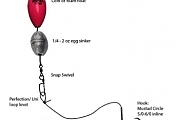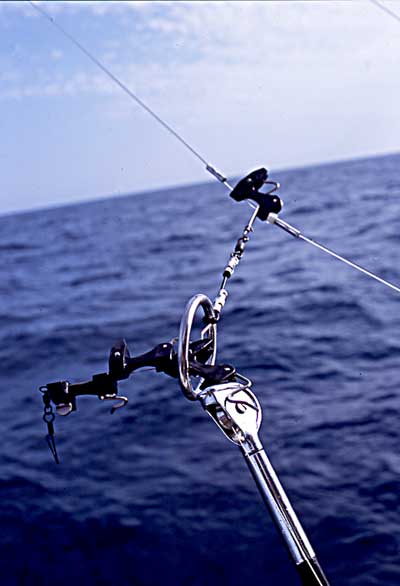

I secure my ball bearing swivel with a 15-foot Bimini twist,” he added. “I also pair a 50-80 # stand up roller guided rod with a Shimano 50 Tiagra reel spooled with 50-pound Ande monofilament. ‘The reel is spooled with 500 yards of 80# Ace Hollow Ace core with a top shot of 60# fluorocarbon leader 300 feet but no less than 75 feet.” Specifically, I use a Shimano Tiagra 30 reel on a 50-80 class, fully roller guided straight butt stand up rod,” Scruggs said. ‘ Heading off shore I always ensure I am equipped with the Shimano reels. Now that we have identified where we think we can catch them, how do we go about catching yellowfin tuna in the Gulf of Mexico?įirst off, you need the correct tackle when yellowfin tuna fishing.Ĭaptain Harris Scruggs from Team Aquatic Charter Fishing in Panama City, FL shared his preferred yellowfin tuna’s equipment list.
#KITE FISHING TIPS HOW TO#
“It is all about playing the odds when you think about how to catch tuna in the Gulf of Mexico and every time you get an additional overlapping favorable layer for a spot the greater your chances for fishing success becomes,” Hilton said. It will repaint the shot and anything that is cooler than your minimums and above your maximum gets marked. You can insert that into your range and tell the system that is the only water you want to look at. To address this, the system allows you to go in and focus on the area you want to go to and correlate the cool and warm colors with a cool and warm temperature scale. Hilton noted that the regions are fairly large being about 250 miles across on average and because they try to optimize the sea surface temperatures based on the entire region, that results in a fairly large range of temperatures. Realtime charts and data will help put you on the yellowfin’s much quicker. “You can put in a minimum and maximum temperature range for and it will focus in on those parameters and it will only show the water in the region that is inside of that range.” You can define which areas are within the preferred and tolerated comfort temperature zones of the species that you are pursuing,” Hilton pointed out. “ SST charts are useful in a variety of ways. Subtle changes of even half a degree may be enough to trigger a bite. These nutrient rich water “breaks” attract baitfish which attract predators such as yellowfin. and the sudden change in depth creates turbulence. This could be a result of a current passing over varied topography, in canyons, drop-offs, kinks, ridges, bumps, etc. How to catch yellowfin tuna in the Gulf of Mexico – How Hot is it?Ībout Sea Surface Temperature (SST) ChartsĪ “temp break” is where warmer water meets colder water resulting in a temperature change. The platforms and drill ships that are in bad altimetry still have predators to be caught and your success may depend on how much pressure those fish get because they aren’t getting refreshed by an upwell,” Hilton added. “If I had a choice to go to a structure that is in bad altimetry or one that is in good altimetry, I’ll be going to the one in good altimetry. “If you are fishing the rigs you can pretty much throw the altimetry data out of the window because the bait is no longer flowing in the current and if the baits are not leaving the predators are not leaving either which means you can still catch fish.” Hilton said.
#KITE FISHING TIPS FREE#
The big kink in the works is when you fish deep water structures because your bait is no longer free flowing and it is staying within the refuge created by the structure.Ĭatching yellowfin tuna like this takes a good amount of knowledge, as well as patience. In this environment your bait will be free-floating with the ocean’s currents. Hilton advises that anglers start with altimetry to identify the upwelling and downwelling ocean current that you will find in open water. “You are either going to be out there in open water rip fishing along weed lines and color changes or you can target surface structures, like drillships, semi-submersibles and spars,” Hilton said. Hilton RTN founder Thomas Hilton explained that when you are targeting yellowfin tuna there are really two ways to go about it. This water movement is a major component in fishing success but it is affected by other factors. On the other hand, “downwelling” where the water is pushed downward, holds few nutrients and subsequently, your chances of hooking a fish in this environment is lessened. This is significant in that “upwelling” currents bring nutrients up from deeper waters where it interacts with the sunlight and is the foundation for the food chain.

Utilizing science and technology will save you a lot of time searching for fish.Īltimetry is basically the measurement of the height of the sea surface and it shows whether the currents are “upwelling” or “downwelling”.


 0 kommentar(er)
0 kommentar(er)
